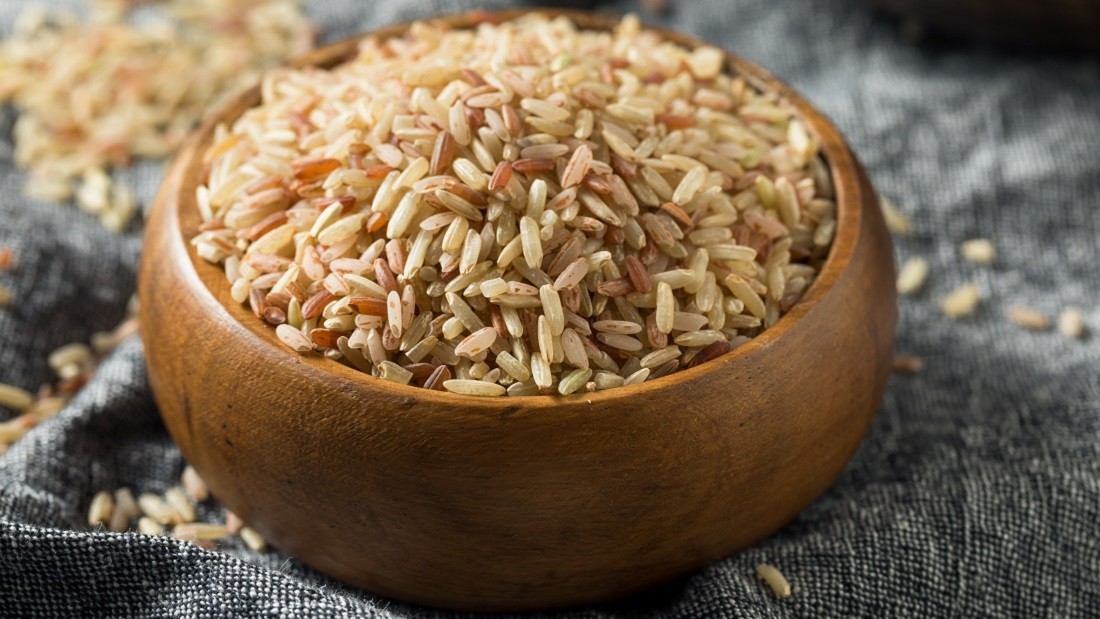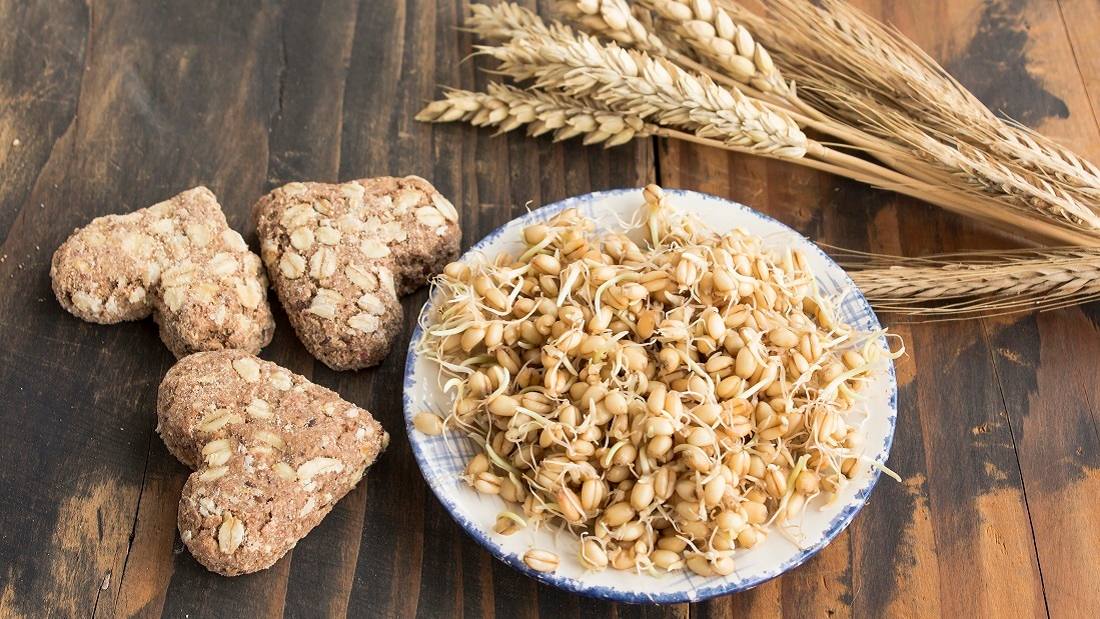Vitamin B1 (thiamine)

How much do you need daily?
Men need around 1.0 milligram and women, 0.8 milligrams of thiamine (vitamin B1) per day.
The government recommends the following intakes
| Age | Amount of vitamin B1 (thiamine) recommended per day (milligrams) |
|---|---|
| 0-9 months | 0.2 |
| 10-12 months | 0.3 |
| 1-3 years | 0.5 |
| 4-10 years | 0.7 |
| Males | |
| 11-14 years | 0.9 |
| 15-18 years | 1.1 |
| 19-50 years | 1.0 |
| 50+ years | 0.9 |
| Females | |
| 11-14 years | 0.7 |
| 15-50+ years | 0.8 |
| During last trimester of pregnancy | +0.1 |
| Breastfeeding | +0.2 |
Are we getting enough?
The 2014 UK National Diet and Nutrition Survey suggests that most people get a sufficient amount of vitamin B1 (thiamine) from their diet with less than 0.5 per cent of participants having low intakes.
However, a number of people may be vulnerable to deficiency. Elderly people who rely on ready meals may be at risk. Also, people who avoid cereal products (such as breakfast cereals, bread and pasta) because of gluten intolerance. Cereal products are the main source of thiamine in the average UK diet. People who follow a Paleo diet avoid these foods, leaving them vulnerable to thiamine deficiency as well.
Why do we need it??
Thiamine is one of the water-soluble B vitamins. Most of the thiamine in our body is located in our skeletal muscles, heart, brain, liver and kidneys. However, we don’t build up stores of this vitamin, so you need it in your diet every day. All B vitamins help the body convert carbohydrates from food into the main body fuel (glucose) needed for energy. B vitamins are also important for fat and protein metabolism, healthy immune system and nervous system functioning.
Thiamine is found in both plant and animal based foods and plays an essential role in many metabolic reactions. It’s crucial for the formation energy in all of our cells as it helps form adenosine triphosphate (ATP) – the ‘molecular currency’ of energy transfer within cells. It is also necessary for the digestion of carbohydrates.
Severe malnutrition and lack of thiamine can lead to a disease caller Beriberi, characterised by swelling, tingling, or burning sensation in the hands and feet, confusion and lack of mental awareness, trouble breathing (because of fluid in the lungs) and uncontrolled eye movements (nystagmus). Beriberi occurs mostly in developing countries and is uncommon in Europe.
Do I need a supplement?
No, a healthy vegan diet containing the above foods on a daily basis will cover your needs. The Department of Health say you should be able to get all the thiamine you need by eating a varied and balanced diet. They say that if you do take supplements, you should avoid taking too much as this might be harmful. They suggest that 100 milligrams or less a day of thiamine supplements is unlikely to cause any harm.
The best plant sources

The best plant sources of thiamine include wholegrains (oats, wholemeal bread, wholewheat pasta and brown rice), acorn squash, yeast extract (Marmite/Vegemite), sunflower and sesame seeds (including tahini, found in hummus), corn on the cob, nuts (pecans, Brazil and hazelnuts) and pulses (lentils, beans, peas).
Nutritional yeast is a food additive that can be used as a condiment or ingredient. It is made from yeast grown on molasses and then harvested, washed and heated to kill or ‘deactivate’ it. It doesn’t froth or grow like baking yeast as it is inactive. It is sold in tubs of flakes that can be sprinkled on dishes or added to sauces. Very popular with vegans, it even has its own nickname – nooch! A five gram teaspoonful of nutritional yeast provides over 200 per cent of your daily requirement of thiamine. Buy one that’s fortified with vitamin B12 to cover all bases!
Wheat germ is the heart of the wheat grain. It is usually removed when flour is milled to create white flour, but remains in wholegrain flour. Use up to two tablespoons a day, sprinkled over breakfast cereals, soya yogurt or added to smoothies. Store it in the fridge to preserve the heathy polyunsaturated fats it contains.

Signs of deficiency
Headache, nausea, fatigue, irritability, depression, stomach discomfort, forgetfulness, poor coordination, stomach upsets, constipation, laboured breathing, loss of appetite and weight loss.
Deficiency occurs mostly in populations whose diet consists of poor sources of thiamine (white ‘polished’ rice and white flour). It can also be caused by diets rich in thiaminase (a substance that breaks down thiamine). Thiaminase is found abundantly in some raw or fermented fish, ferns and insects consumed primarily in Africa and Asia. Thiamine deficiency is rare in Western countries but can occur in alcoholics, people with Crohn’s disease, anorexia and those undergoing kidney dialysis. Sever deficiency can lead to a condition known as beriberi (see additional information). Magnesium is needed for the activation of thiamine in the body and other B vitamins may also be low in people with thiamine deficiency.
Foods to include
| Food | Milligrams of vitamin B1 (thiamine) per serving | % of recommended daily amount for women (0.8 milligrams) | % of recommended daily amount for men (1.0 milligrams) |
|---|---|---|---|
| *Nutritional yeast with B12 (5g serving) | 2.25 | 281 | 225 |
| Wholemeal spaghetti (average portion, 220g) | 0.46 | 58 | 46 |
| Fortified vegan breakfast cereals (Shreddies, medium portion, 50g) | 0.40 | 50 | 40 |
| Oatmeal or rolled oats (40g portion) | 0.36 | 45 | 36 |
| *Acorn squash, baked (1 cup, 205g) | 0.35 | 44 | 35 |
| Yeast extract – Marmite/Vegemite (1 portion, 8g) | 0.33 | 41 | 33 |
| Wheat germ (2 tablespoons, 14g) | 0.28 | 35 | 28 |
| Sunflower seeds (1 tablespoon, 16g) | 0.26 | 32 | 26 |
| Brown rice (boiled, medium portion, 180g) | 0.25 | 32 | 25 |
| Corn on the cob (kernels only, 125g) | 0.23 | 28 | 23 |
| Pecan nuts (5 nuts, 30g) | 0.21 | 27 | 21 |
| Tomato ketchup (20g) | 0.20 | 25 | 20 |
| Peas (medium portion, 70g) | 0.18 | 23 | 18 |
| Tahini – sesame seed paste (1 heaped teaspoon, 19g) | 0.18 | 22 | 18 |
| Sesame seeds (1 heaped teaspoon, 19g) | 0.18 | 22 | 18 |
| Oranges (1 medium, 160g) | 0.18 | 22 | 18 |
| Avocado (1 medium, 145g) | 0.15 | 18 | 15 |
| Brazil nuts (6 nuts, 20g) | 0.13 | 17 | 13 |
| Lentils, red, cooked (120g) | 0.13 | 16 | 13 |
| Hazelnuts/filberts (1 handful, 28g) | 0.12 | 15 | 12 |
| Soya milk (average glass, 200g) | 0.12 | 15 | 12 |
| *Soya beans – edamame (medium portion, 70g) | 0.11 | 13 | 11 |
Source: Public Health England: McCance and Widdowson’s The Composition of Foods Integrated Dataset, *USDA Food Composition Databases.
Additional information
Thiamine deficiency can lead to a condition known as beriberi, a disease that can affect the heart and nerves. Risk factors include alcoholism (because alcohol reduces the absorption of thiamine), dialysis and diabetes (because of altered kidney function). Studies show that thiamine is removed from kidneys at a significantly higher rate in people with diabetes. This could become an increasing problem as the number of people with diabetes is rising rapidly. Bariatric surgery, chronic diarrhoea and taking high doses of diuretics can also cause thiamine deficiency.
Beriberi has occurred in prisons, among displaced populations in refugee camps and during famine. It can occur in people whose diet is limited to white ‘polished’ rice, which is deficient in thiamine.
Thiamine has been implicated in neurological problems, delirium and dementia. It has long been linked to memory loss and there is some early evidence that it may be linked to Alzheimer’s disease.
This post has been categorised in: A-Z of nutrients, A-Zs, Health




